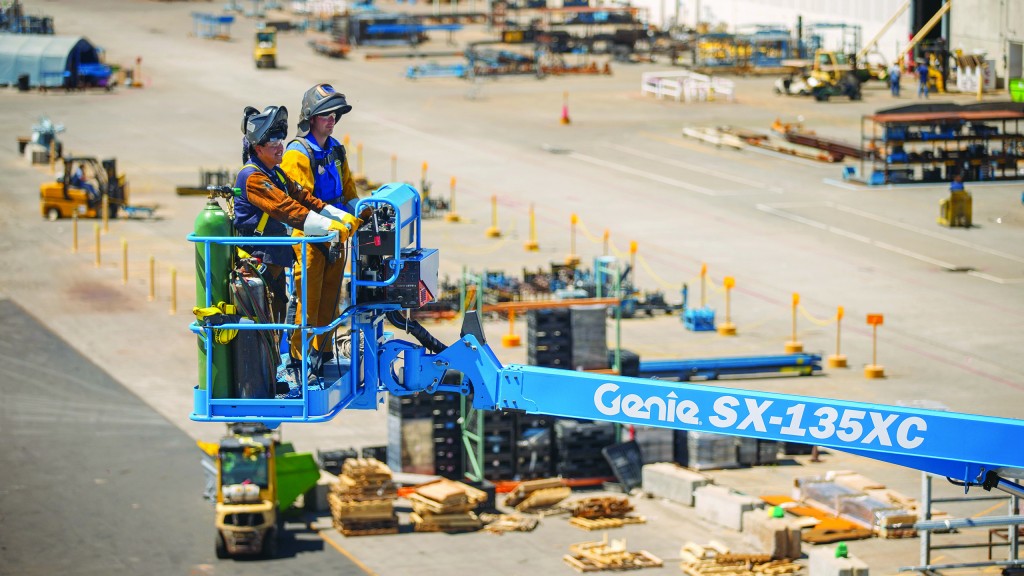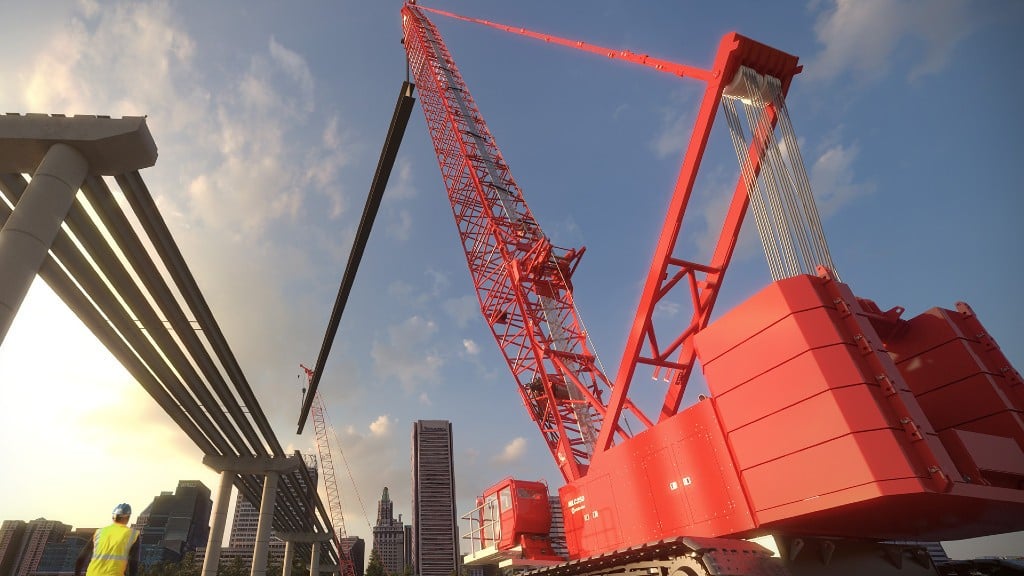Understanding changes to Canada’s CSA B354 Standards for Mobile Elevating Work Platforms (MEWPs)

While Tier 4 Final emissions standards created large disruptions in aerial rental, pending changes to the CSA B354 standards series - which covers all Canadian aerials - will have an even greater impact.
For almost four decades, the current CSA standards have provided best practices for safe, reliable access to work at height. The new standards, based on an ISO model, are very similar to the current European EN280 standard.
The CSA standards have used a representative testing scheme while the European standard uses a more prescriptive method where a design is tested to specific conditions. Both have provided a consistent benchmark for safe machine design.
The primary advantage of the new standards is to move closer towards a global standard that allows easier trade of new and used units between countries.
The updated CSA B354 standards were published in May 2017, creating a new "normal" for the aerial equipment industry worldwide. It is important to understand the more significant changes and what impact they will have.
Standards set a safety level for all participants in the market and can also bring global markets closer together, driving commonality and stronger market competition. The new standards advance the industry in that direction.
The changes apply to several areas:
• Equipment terminology;
• Equipment design standards;
• Safe use and planning;
• Risk assessment planning;
• Training; and
• Maintenance and repair personnel training.
Equipment terminology
Aerial Work Platforms (AWPs) will now become known as Mobile Elevating Work Platforms, or MEWPs. The word "mobile" is important because it means that the equipment can be driven, either under its own power or by manual effort. It is not stationary equipment.
In previous iterations of the standards, AWPs were classified by product types, such as booms, scissors and so on. In the new standards, MEWP classifications are made up of a combination of two key distinguishing descriptions:
• Group A and Group B MEWPs,
• an associated MEWP Type.
A MEWP Group is determined by the platform location in reference to the equipment's tipping line, which is either at the wheels or the outriggers.
A Group A machine has a design that does not allow the main platform to extend beyond the tipping line. In other words, the platform does not go outside of the drive chassis envelope. A perfect example of a Group A would be a scissor lift.
Conversely, a Group B machine has a design that allows the platform to extend beyond the tipping line. A great example of a Group B machine would be an articulating or telescopic boom.
A MEWP Type is in reference to the equipment's ability to travel:
Type 1 - Travelling is allowed only with the MEWP in its stowed position;
Type 2 - Travelling with the work platform in the elevated position is controlled from a point on the chassis;
Type 3 - Travelling with the work platform in the elevated travel position is controlled from a point on the work platform.
Examples are:
Group A, Type 1 MEWP: Genie AWP Super Series manually propelled lifts. The platform never extends beyond the tipping line, and the machine is designed to only be moved with the platform in the stowed position.
Group A, Type 3 MEWP: electric or rough-terrain scissor lifts. The main platform never extends beyond the tipping line, and machine travel is controlled from the platform controls.
Group B, Type 1 MEWP: Genie TZ-34 and TZ-50 trailer-mounted booms. The platform is designed to extend beyond the tipping line, and the machine is designed to only be moved with the platform in the stowed position.
Group B, Type 3 MEWP: articulated and telescopic booms. The platform is designed to extend the tipping line, and machine travel is controlled from the platform controls.
Type 2 MEWPs are not as common as the others. This type includes truck-mounted aerials.
Another significant change in the new standards is that they are now written in a topic-specific format, rather than by product type. Topics include design, safe use and training. These topics will encompass all Groups and Types of equipment, both currently in use and in development. Users and operators need to be aware of this change as it will affect their certifications. After the new standards are implemented, certifications will reference the Group and Type of MEWPs the operator has been trained on.
These language and terminology changes in the new standards reflect what will work best in a global industry, which will allow for easier trade of new and used equipment worldwide.
Equipment design standards
In addition to the terminology and language changes in the new CSA B354 standards, the standards also include several big changes to the equipment itself. New features, such as Platform Load Sense and Tilt Sensing, will be incorporated into the design of many MEWPs, as well as new provisions for machines rated "Indoor Only."
Platform Load Sense (aka Overload System or Load Sense System): all MEWPs will be required to continuously check the weight in the platform and disable certain functions if the load is above the platform load limit.
Tilt Sense: drive and certain boom functions must be disabled when out of their slope limit. Functions are restricted to those that safely return the machine to terrain that is within limits.
Indoor-Only Machines: allows for the development of smaller, lighter-weight MEWPs bearing an "Indoor Only" rating because these MEWPs cannot be used in conditions where they might be subjected to any wind.
In addition to the big changes highlighted above, there will be many seemingly smaller, but just as important, alterations to pay attention to, including toeguards on work platform entrances, prohibiting the use of flexible and chain gates, as well as adjustments to the labelling and marking of machines.
These big and little changes in the new standards are intended to support aerial equipment manufacturers' efforts to provide the latest advancements in safe work-at-height solutions for owners and operators of MEWPs worldwide: solutions that get people safely to aerial work spaces, keep them safe while they complete the aerial work and safely get them back down.
Safe use and planning
Many aerial jobsite accidents or damage to equipment occurs when operators overlook important safety precautions or don't fully understand how to operate equipment. Making safety a top priority on jobsites, the new standards require that a safe-use program specific to MEWPs must be developed by the user. These must include, but are not be limited to, the following:
a) Performing a site risk assessment;
b) Selection, provision and use of a suitable MEWP and associated equipment;
c) An assessment that the support surface is adequate to support the weight of the MEWP;
d) MEWP maintenance including inspections and repairs as required;
e) Informing the operator of local site requirements, and warning and providing the means to protect against identified hazards;
f) Having a trained and qualified supervisor to monitor the performance or the work of the operator;
g) Prevention of unauthorized use of the MEWP; and
h) Safety of persons not involved in the operation of the MEWP.
Risk assessment and rescue planning
The risks associated with the task specific to MEWP operations shall be identified under provisions in the new standards. These might be associated with the location where the work is to be carried out, the nature of the MEWP, or the personnel, materials and equipment to be carried.
The user must develop a written rescue plan that will be carried out in the case of machine breakdown, platform entanglement or fall from a platform. The plan shall be put in writing and become part of the company's training manual.
All occupants must receive training that explains the procedures to follow if they fall or witness another worker's fall. This plan must limit the time that a properly restrained worker hangs suspended in the air. (See the sidebar for a description of the Eight Stages of Risk Assessment.)
Training
From a training and safety perspective, one of the biggest challenges the industry sees right now is increasing awareness about why safety training is so important. Many companies don't understand their responsibilities under the new CSA standards, which includes training requirements for aerials. It is not just that they're required by law and enforced by OSHA, but there are very good reasons for the training - to keep their operators safe. When companies don't invest the time or money to train their people, they choose to take a chance and hope nothing happens. Ensuring that operators and other personnel are properly trained is one of the first steps in helping to prevent accidents.
To be in compliance with the new standards, the MEWP operator must ensure that all occupants in the platform have a basic level of knowledge to work safely on the MEWP, including:
a) The requirement to use fall protection and the location of fall protection anchors;
b) How their actions could affect stability;
c) Safe use of MEWP accessories that they are assigned to use;
d) Site specific work procedures which the occupants must follow for the operation of the MEWP;
e) Hazards related to the task at hand and their avoidance; and
f) Manufacturer's warnings and instructions.
At least one of the occupants must be provided with the knowledge to operate the controls in an emergency when the operator cannot do so.
Maintenance and repair personnel training
Users must ensure that maintenance and repair personnel are trained by a qualified person to inspect and maintain the MEWP in accordance with the manufacturer's recommendations, as well as CSA standards.
In the case where a MEWP is being rented, arrangements must be made by the owner to identify the entity that will be responsible for the inspections and maintenance activities described in the standard.
The two types of inspections are:
Frequent Inspections: when the MEWP is put into service or has been out of service for three months;
Annual Inspections: performed no later than 13 months after the previous Annual Inspection.
What you can do to prepare
The new standards do not require retroactive changes, so existing fleets are not affected. Pragmatically, though, we all need to face the fact that these systems are not free and will carry some cost on new aerials.
For example, once the new standards go into effect, maintenance procedures will need to be revised and customer service staff should be prepared to explain to customers the differences when operating a newer machine. Plus, new training programs will be required.
A common rental company question will be how to manage mixed fleets where only a portion of the machines have the new systems. Engaging early adopters in your customer base will help, with a side benefit being trained operators accepting or even asking for the modern units.
Final comments
This article only scratches the surface of the changes that the industry is facing. We encourage you to purchase a copy of the CSA B354 standards to achieve a full understanding of the requirements. Do not underestimate the impact the introduction of the new CSA B354 standards will have and start preparing now for a smoother transition.



